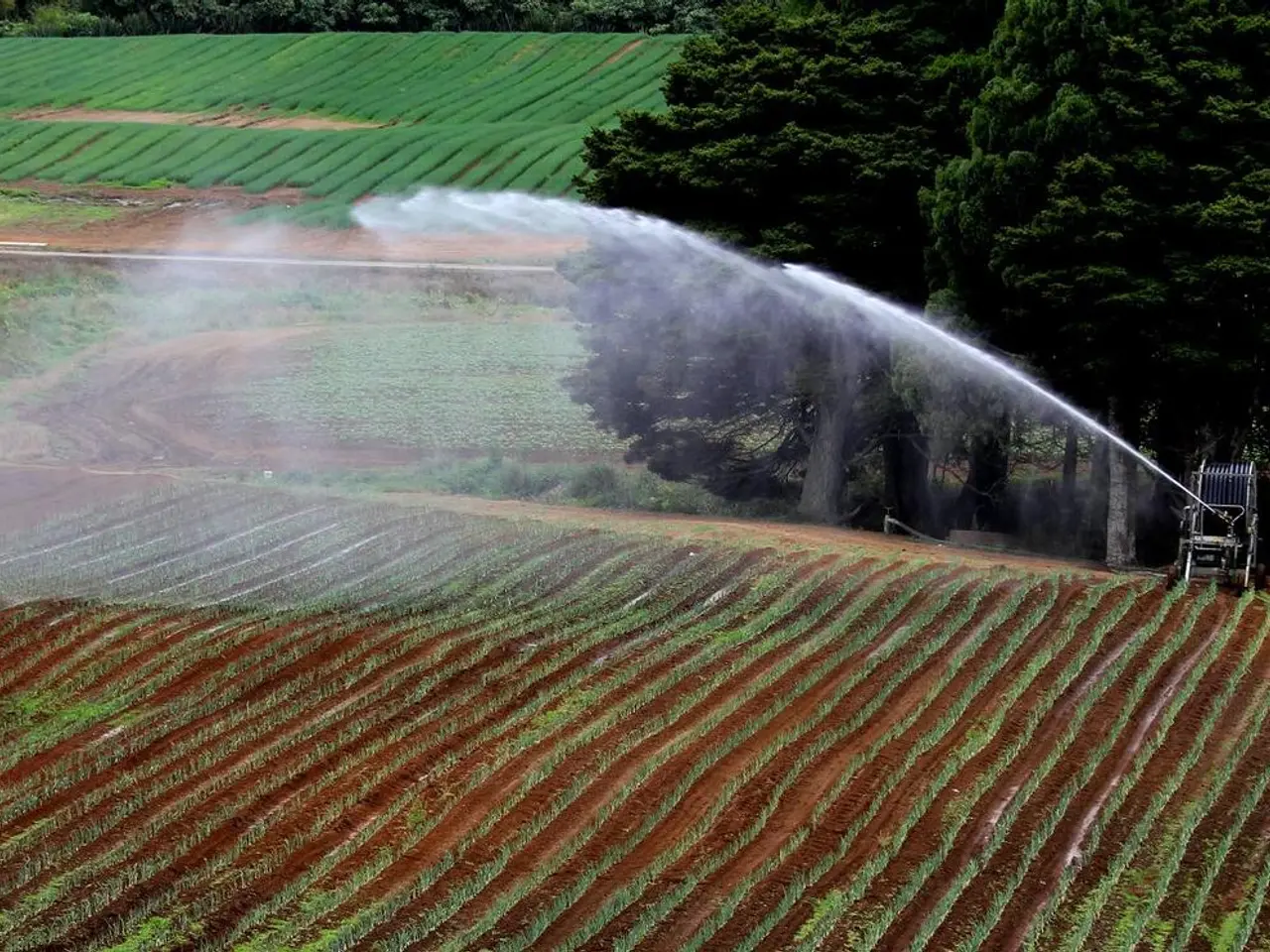Guide for Establishing a Permanent, Eco-Friendly Agricultural System
Farming, a fundamental practice for human survival, has long been challenged by the need for resources and the impact on the environment. However, a revolutionary approach called permaculture is helping farmers across the globe to create self-sustaining farms that not only save money in the long run but also bring numerous benefits to the environment and food security.
At its core, permaculture is about designing agricultural systems that mimic natural ecosystems, fostering resilience, diversity, and efficiency. By integrating crops, trees, and animals in mutually supportive arrangements, permaculture reduces the need for chemical inputs and irrigation, making farms more productive and resilient over time.
One of the key strategies in permaculture is the creation of diverse plant communities. This diversity not only supports the farm's ecosystem but also attracts beneficial insects, wildlife, and plants. Planting hedgerows and windbreaks is a common technique used to create these diverse habitats and microclimates.
Permaculture systems often incorporate agroforestry and syntropic farming practices, growing plants in layers and resembling natural forests. This layered planting increases biomass, improves soil organic matter, and conserves moisture, reducing irrigation requirements and mitigating environmental degradation.
Moreover, permaculture farmers learn to work with nature, managing pests and diseases organically using methods like companion planting and organic pest control. Good water management is crucial, and greywater systems, solar power, and water features like ponds or wetlands are employed to promote water conservation.
The principles of regenerative agriculture, holistic land management, and sustainable food production guide permaculture farmers as they build thriving systems that help the land and the community. Adding animals to a permaculture system is key to a balanced ecosystem, improving soil health and controlling pests.
By following the ethics of caring for the Earth, caring for people, and sharing fairly, permaculture fosters a sense of community among farmers. Sharing knowledge and building connections through online forums, local groups, and workshops is essential for success.
Direct sales at farmers' markets and Community Supported Agriculture (CSA) schemes are great for reaching customers and teaching them about permaculture. Working with local restaurants and businesses can help more people find and try a farm's products, while extra products like jams or baked goods can add 15-20% to a farm's income.
Preserving natural areas on the farm provides refuge for native plants and animals, supporting local ecosystems. Passive solar design is a smart choice for farm buildings and greenhouses, reducing the need for artificial heating and cooling.
Starting a permaculture farm comes with its own set of challenges, but with the right approach, these hurdles can be cleared. For a deep dive into permaculture, books like "The Permaculture Garden" and "Permaculture Design" by Graham Bell and Geoff Lawton are invaluable resources.
In summary, permaculture is a way to design systems that work like nature, started by Australians Bill Mollison and David Holmgren. By fostering resilient, diverse, and efficient ecosystems, permaculture makes self-sustaining farms capable of producing abundant, nutritious food while restoring and protecting environmental health. Embracing permaculture is not just about creating a sustainable farm—it's about making homes, gardens, and communities better for future generations.
- Native plants are integrated into permaculture gardens to boost biodiversity and support the local ecosystem.
- Design principles in permaculture aim to create self-sustaining garden systems that mirror natural ecosystems.
- Compost, swales, and zones are essential components of the water management and soil health in a permaculture garden.
- Permaculture encourages companion planting to deter pests and promote healthy growth among crops.
- Regenerative and sustainable gardening practices are at the heart of the permaculture lifestyle.
- As part of the permaculture design, animals are often introduced to control pests and improve soil health.
- By following the ethics of Earth care, people care, and fair sharing, permaculture fosters close-knit communities.
- Home-and-garden owners can implement permaculture principles by creating diverse plant communities and managing water efficiently.
- Books like "The Permaculture Garden" and "Permaculture Design" offer in-depth guidance on implementing permaculture in one's own garden.




